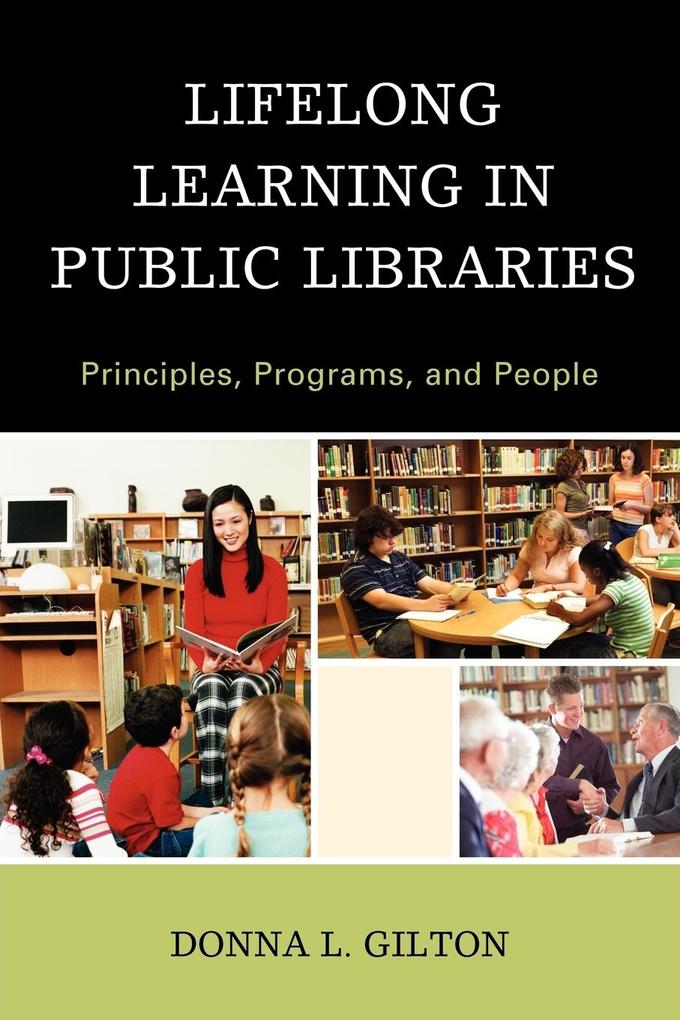This book demonstrates that public librarians can promote learning by combining the elements of Information Literacy Instruction (ILI) with traditional practices of public libraries. It not only provides background on ILI and current developments in public library instruction, it also examines educational theories and practices derived from a variety of fields and translates the theories and practices into a well-coordinated plan for libraries to follow. It encourages librarians to rethink practices to incorporate the principles of ILI and will enable public librarians to extend and enrich their instruction on information use.
Inhaltsverzeichnis
Chapter 1. The World of Information Literacy Instruction (ILI): An Extensive and Intensive Introduction and Overview
A. What is Information Literacy
B. Early Instruction in Academic Libraries
C. From Bibliographic Instruction (BI) to Information Literacy Instruction (ILI)
D. Current Instruction in Academic Libraries
E. Instruction in School Media Centers
F. Instruction in Special Libraries
G. ILI as a Department Store: Components of Instruction
H. Information Enfranchisement, Samuel Green and the Three-Legged Stool of Reference Services
I. Instruction in Public Libraries: Some History and Background
Chapter 2. Current Developments in Public Library Instruction
A. Forms of Public Library Instruction
B. Public Library Instruction Outside the U.S.A.
C. State of the Literature in Public Library Instruction
Chapter 3. How People Learn, Grow, Think, Feel, and Develop: Do We Have Theories!
A. How People Mature: Theories of Erikson, Piaget, Perry, Belenky, Kohlberg, Gilligan, Vygotsky, and Others
B. How People Act: Behaviorism
C. How People Think: Cognitive Theories
D. How People Solve Problems: Constructivism
E. How People Feel: Educational Humanism
F. How People Learn: Perceptual Modalities, Field Dependence and Independence, and Multiple Intelligence
Chapter 4. Instructing Diverse Groups
A. International Students and Immigrants
B. U.S. Ethnic Groups, Especially Racial Minorities
Chapter 5. Teaching People With Disabilities in Ten Steps
A. Know the Issues
B. Know the Laws and the History of Services, Family Activism, and Organizations
C. Know About Developments in Education and LIS
D. Know Whether Your Library is ADA-Compliant
E. Know Whether Your Website is Accessible to All
F. Know How to Find Out About Adaptive or Assistive Technology
G. Plan Services to People With Disabilities, in General
H. Teach Your Staff
I. Plan Your Instruction
J. Know the Needs of Specific Groups
Chapter 6. Making a PACE of a Program: Planning, Administration, Coordination, and Evaluation
A. Models of Instruction, Modes of Planning
B. Startup Resources For ILI
C. Planning
D. Evaluation
E. Marketing
F. Staffing For Instruction
G. What a Good Instruction Program Looks Like
Chapter 7. Public Libraries as Non-formal Cultural Institutions: Impact on Programming and Instruction
A. Types of Education
B. Churches and Other Religious Bodies as Agents of Non-formal Education
C. Museums and Public Libraries as Agents of Non-formal Education
D. Traditional Public Libraries and ILI
Chapter 8. Instructing From the Cradle to the Grave Throughout the Life Cycle
A. Preschoolers and Their Caretakers
B. Children, Teens, and Family Outreach
C. Coming of Age: Roads to Adulthood
D. All Grown Up and Places to Go: Adult Learners
E. Coming of Age: Elderhood
F. Conclusions
Bibliography










